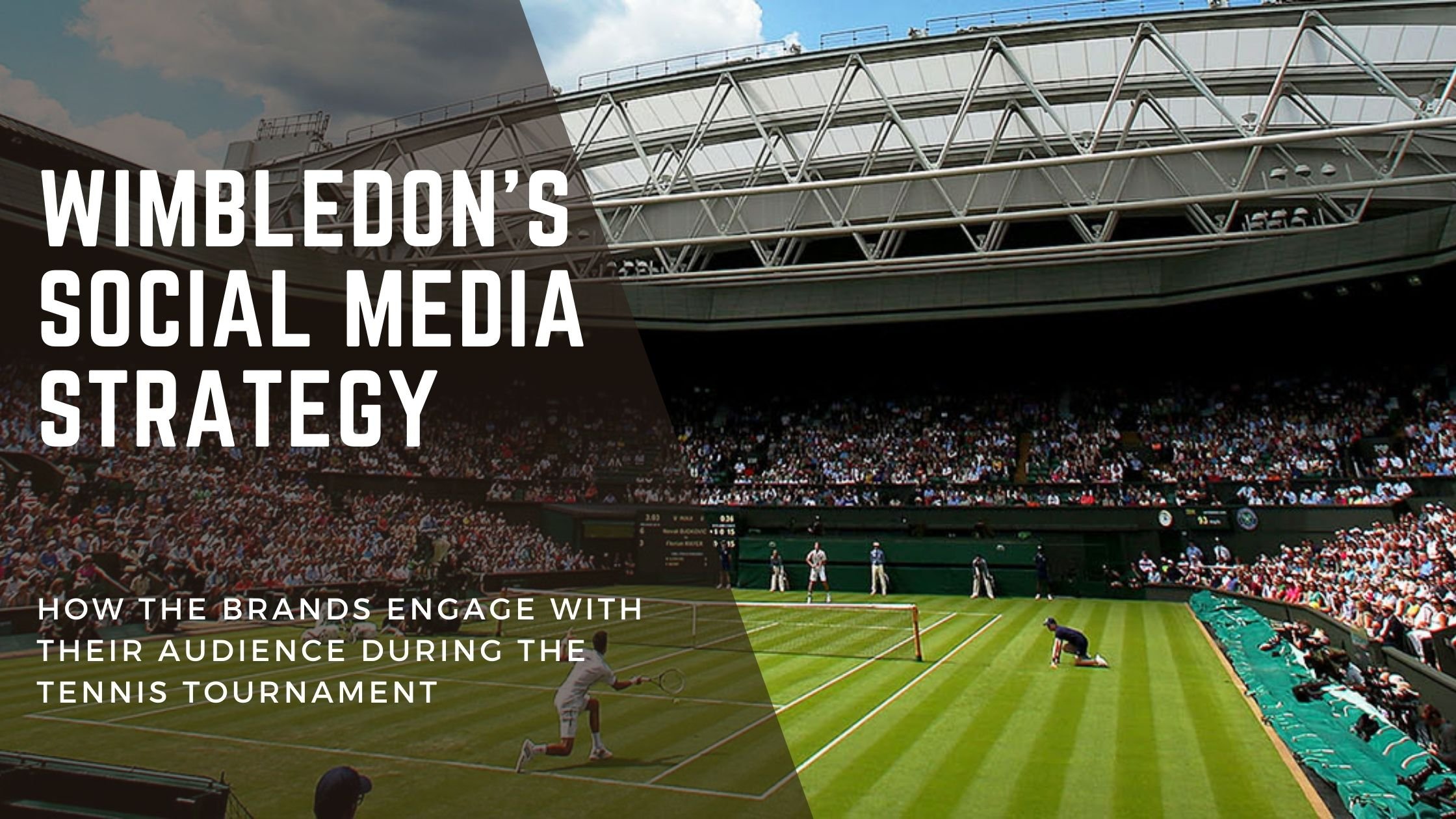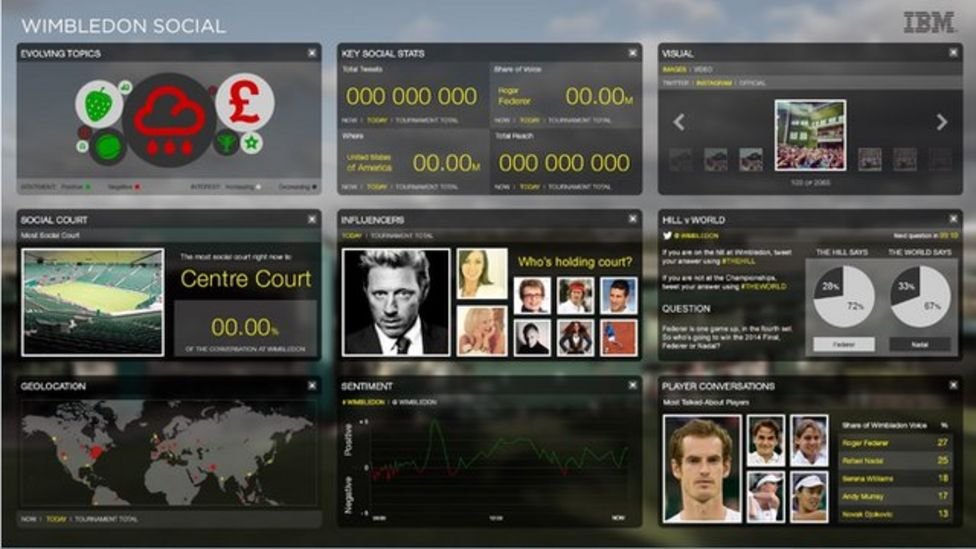Wimbledon's Social Media Strategy: How the Tennis Tournament Engages Its Fans
The Wimbledon Championships are one of the most prestigious tennis tournaments in the world. This year's tournament will be held from June 22 to July 10, and some of the biggest stars in tennis will be competing for the title. While Wimbledon is known for its stringent rules regarding advertising, brands will still be looking to athletes to take to social media to post about their experiences at Wimbledon. In this blog post, we'll look at some of the most influential tennis stars on social media.
Centre Court is preparing for its 100th year of action, and as the world's most decorated players prepare to take the public eye, their corporate sponsors are pushing them towards more focus. The Wimbledon Championships will be here soon. As Centre Court celebrates its centennial anniversary, the globe's most accomplished gamers gear up to take centre stage - which is good news for those of us in the social media marketing business.
Where can I follow the Wimbledon tournament on social media?
Facebook - Facebook.com/Wimbledon
Twitter - @Wimbledon
Instagram - Instagram.com/Wimbledon
Snapchat - Wimbledon
YouTube - YouTube.com/Wimbledon
TikTok - @Wimbledon
Pinterest - Pinterest.com/Wimbledon
What is it about Wimbledon tennis that makes it so special when compared to other sports events?
Content is king – videos and pictures account for 34% of all Wimbledon's Twitter postings, compared to the French Open (25%), US Open (15%), and Australian Open (14%).
Wimbledon's history can't be beaten. The gravity, royal and celebrity attendees, dress code, and even the strawberries and cream! They stay true to their strong brand ideals while also utilising their archive material to create enthralling, shareable tales.
Behind the scenes – Fans aren't just given the facts and scores on social media; they're also given behind-the-scenes access. In 2014, Roger Federer gave a tour of the facility via Periscope (Twitter's live video feature). And who can forget about David Beckham catching a tennis ball in real-time? The Beckham catch video was one of Wimbledon's most retweeted posts.
IBM has been a partner of All England Lawn Tennis Club since 1990 and has been developing above chart that showcases social media interactions during the tournament since 2014
What are some of your strategies for interacting with your brand’s audience during the event?
While Wimbledon has always been a traditional event, they have made some changes in recent years to try and engage with a younger audience. One of these changes is their use of social media. Wimbledon was one of the first sporting events to embrace social media and they continue to be a leader in this area. Wimbledon uses social media to engage with its fans in several ways.
The championship may be followed daily via social media platforms, and if you miss a match day, don't worry; they've created highlights for every day. The features of the highlights include fashion events, slow-motion videos of the players, celebrities, and personnel profiles. Consumers are always looking for more content because it makes them feel a part of the action.
The Wimbledon feed is a great blend of video and still pictures. Video has become increasingly popular on social media, as it may significantly enhance the reach of a post when compared to static images, and they've put in the effort with some excellent interviews and match best moments montages. Surprisingly, they are extremely engaged. This is to be expected, given the decline of organic reach, thus even Wimbledon can no longer rely on followers alone.
They also do a great job of using user-generated content, which is always a winner on social media. Wimbledon encourages fans to share their experiences at the tournament by using the hashtag #Wimbledon. This allows Wimbledon to curate and shares the best content while also promoting its brand. Wimbledon has been very successful for brands or organisations when it comes to promoting their strategies. In 2015, All England Lawn Tennis Club (AELTC) was one of the first brands to use Snapchat's 'Geofilter' feature. #TakeYourSeat, a campaign run on Instagram by the same name, will create a "digital mosaic" of the Wimbledon hill from images submitted by enthusiasts.
What's new this year?
However, because the Wimbledon event has such tight restrictions on advertising, tennis sponsors are compelled to be more creative to promote brand recognition. This is where Wimbledon's social media strategy comes in. To engage with fans, Wimbledon has strict rules when it comes to advertising at the event. Therefore, brands will be looking to athletes to take to social media to post about their products during the tournament.
It's also no surprise that the Castore logo pops up frequently in Andy Murray's Instagram posts and that Nike ticks appear in Serena Williams' on-court pictures. With that in mind, physical branding experts Solopress examined the sponsorship agreements, Instagram presence, and on-court successes of the world's top tennis players to identify who the most popular tennis influencers are.
Tennis pros with the most significant social media clout at Wimbledon
Here is the list of all those influencers.
SERENA WILLIAMS
Serena Williams is not only the most accomplished women's tennis player in the Grand Slam era but also the most marketable. She has garnered nearly $95m from prize money throughout her two decades on tour – more than any other female athlete.
The 23-time Grand Slam singles champion boasts an Instagram following of over 15 million, with her Wimbledon posts achieving an engagement rate of around three per cent. Nike has been a long-time partner of Williams and continues to produce her signature line of apparel. The brand also provides on-court Wimbledon outfits for the Serena Williams Collection that are available to the public.
From Aston Martin to Pepsi and luxury watchmakers Audemars Piguet, the list of corporate partners of Williams is long. Her 2021 earnings were $45.9m – almost entirely from sponsorships.
RAFAEL NADAL
The ‘King of Clay' is one of the most decorated tennis players in history, and he has the most followers among all male tennis players. 'Rafa' was valued at $21 million in 2021, according to Forbes, made up of $27 million in prize money and $23 million from endorsements.
Rafa recently added beer brand Amstel to his list of sponsors, alongside car manufacturers KIA, premium watchmakers Richard Mille, and Nike. He commands $1 million per public appearance at exhibitions and events. Nadal's Wimbledon posts have an engagement rate of around two per cent. He has over 15 million followers on Instagram, where he is regularly seen posting about his training regime, matches, and sponsors.
NOVAK DJOKOVIC
Even though he lost major sponsors such as Peugeot and UKG in 2022 as a result of his remarks and actions during the Covid-19 Pandemic, Novak Djokovic is still one of the most marketable tennis influencers.
Novak Djokovic has earned over $33m since 2021 via endorsements, prize money, and appearance fees in his career.
Although he is still affiliated with well-known brands such as Hublot, Head, Asics, and Raiffeisen Bank, among other things, he has a lucrative agreement with Lacoste that may earn up to $10 million annually.
ROGER FEDERER
Federer has collected a reported $131 million in prize money throughout his illustrious career, making him the most lucrative tennis sponsorship contract.
He has earned almost $900 million as a result of brand partnerships throughout his career. In 2021 alone, Federer earned $90 million in sponsorship agreements.
He re-signed with Rolex for $9 million a year in 2016. He also signs a ten-year contract worth $5 million every six months with Mercedes-Benz and gets a new vehicle once every six months, which will end in 2027.
Since 2012, Roger Federer has collaborated with French champagne maker Moet & Chandon. The company has a Wimbledon partnership that includes sponsorship of the player's box and on-court branding.
NAOMI OSAKA
Osaka is one of the most marketable tennis players on the planet, with a huge portfolio of sponsors.
The athlete is presently linked with several prestigious brands, including Tag Heuer and Louis Vuitton, as well as Nike, Panasonic, and Mastercard.
In 2020, Osaka set the record for a female athlete's yearly income with $37 million before blowing past that number the following year with $60 million - around $55 million which was due to her sponsorship contracts.
EMMA RADUCANU
In 2021, Raducanu burst onto the scene as a British phenom, winning the US Open as an 18-year-old qualifier. Her appeal as a marketer instantly skyrocketed, becoming the face of global luxury brands Tiffany and Dior.
Raducanu struck golden sponsorship pacts to boost her public image, including a deal with Evian, Nike, and Wilson, as well as working as a brand ambassador for Porsche automobile companies.
Expect to see Raducanu on the faces of more businesses in the future, with the world at her feet!
NICK KYRGIOS
Kyrgios is the most colourful and entertaining player on tour, thanks to his flamboyant personality and controversial remarks. He's also one of tennis' most popular athletes, making a splash with news-worthy outbursts and audacious, nonchalant trick shots upon his debut on the biggest stage.
After signing with top US agent Stuart Duguid in 2021 and agreeing to contracts with PlayStation, KIA, and Old El Paso, Kyrgios increased the range of endorsements he was receiving in 2021.
With over $8.5 million in prize money throughout his career thus far, Kyrgios's annual earnings may be as much as $10 million thanks to his new sponsorships.
ANDY MURRAY
Murray is currently ranked number four on the all-time prize money list with over $60 million in career earnings. Murray, a two-time Wimbledon champion, has sponsorship deals with Under Armour and Adidas. On the court, Murray now represents Castore, which is a brand of tire sealant.
Swiss watch brand Rado, sports car manufacturer Jaguar, and credit card company American Express have all been part of Murray's list of corporate sponsors. The Scotsman utilizes Head rackets on the court and has appeared in numerous advertisements for the firm.
The media presence of the world's tennis stars is heightened at Wimbledon, making it an excellent opportunity for brand partnerships to maximise return on investment. The new way of marketing is successful among these athletes. With a Wimbledon partnership, brands can reach a wider audience and engage with fans on a more personal level. What do you think of Wimbledon's social media strategy? Let us know in the comments below!
References:



